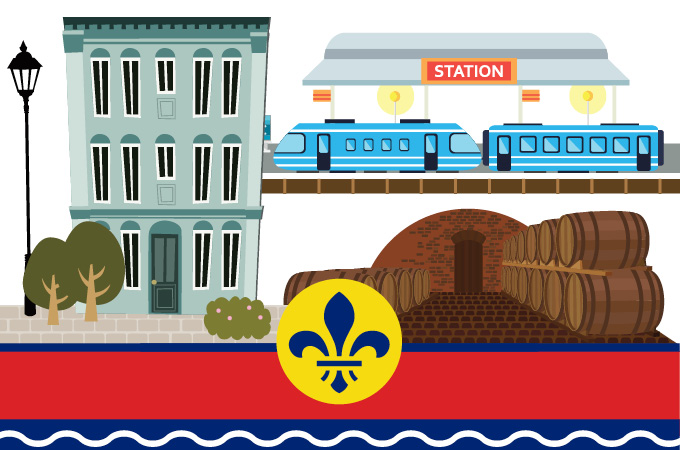If it’s been said once, it’s been said a thousand times: St. Louis is a city of neighborhoods. With 79 unique ones and many beautiful suburbs, it is built of vibrant communities, each with its own fascinating history. We explored the local lore of a few iconic areas to discover the origins of their names.
dogtown
A grisly urban legend links the name back to the 1904 World’s Fair. According to the story, the indigenous peoples on display at the exhibition kidnapped dogs from homes around Forest Park to eat. Thus the area earned the epithet Dogtown. But like with most urban legends, the truth behind the name is a lot less sensational and macabre. The name predates the World’s Fair; references to it can be found in newspapers as early as 1889. It most likely comes from the neighborhood’s mining history in the mid-1800s. ‘Dog’ is found widely in mining terminology, and ‘dogtown’ specifically was used to refer to a group of small structures near a mine.
kirkwood
Established in 1853, Kirkwood was the first planned suburb west of the Mississippi River and as such, is known as the ‘Queen of St. Louis Suburbs.’ As evidenced by the historic train station, the area’s history is closely tied to the railroad. The community was formed around the building of the Pacific Railroad, and its namesake is James Pugh Kirkwood, chief engineer of the project. His many responsibilities for the railroad included making the first survey west from the Mississippi River to the Rocky Mountains, determining possible routes and managing construction.
lafayette square
The area that is now Lafayette Square had less than glamorous beginnings as communal pasture for livestock at the beginning of St. Louis’ history. The land was not privately owned and became the hunting ground of criminals who would rob travelers. In part to drive the thieves out, the commons were sold in 1835, but 30 acres were set aside for a community recreational area. The resulting park was named after the Revolutionary War general (with a really long name!) Marie-Joseph-Paul-Yves-Roch-Gilbert du Motier, Marquis de Lafayette, known in the U.S. (and by Hamilton fans) simply as Lafayette. The famous Frenchman had visited St. Louis during his 1824-25 tour of the U.S.
benton park
While Lafayette Square had ignoble beginnings as grazing land, Benton Park’s origins are a little on the morbid side. The area, which famously attracted breweries thanks to its underground cave system, used to house something much different. The land was first used as a city cemetery in the mid-19th century. After the founding of Bellefontaine and Calvary cemeteries, the area was turned into a neighborhood in 1866. (Don’t worry; none of the original residents remain. Those buried in the cemetery were relocated in 1865.) Originally called City Park, it was renamed to honor Thomas Hart Benton, the first senator from Missouri.
